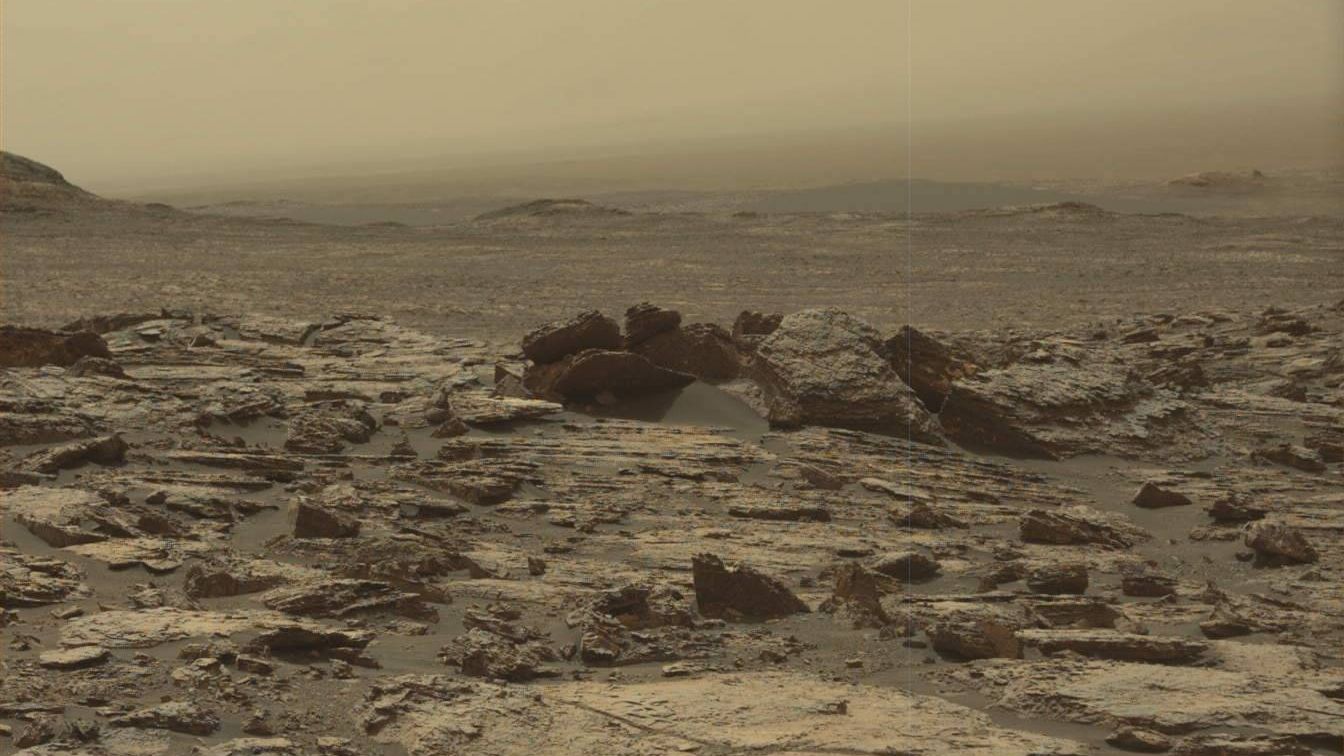Life could explain the abundance of this compound on Mars
Published by Adrien,
Source: Journal of Geophysical Research: Planets
Other Languages: FR, DE, ES, PT
Source: Journal of Geophysical Research: Planets
Other Languages: FR, DE, ES, PT
Follow us on Google News (click on ☆)

A section of the Murray Formation explored by Curiosity, potentially representing an ancient shoreline.
Credit: NASA/JPL-Caltech/MSSS/USGS
In 2016, Curiosity detected traces of manganese dioxide in the crater. Today, much larger quantities have been identified, particularly in a mudstone geological unit called the Murray Formation. This compound, usually associated with oxygen-rich lake or river deltas on Earth, is a potential indicator of conditions favorable for life.
The current abundance of manganese dioxide raises questions, as its formation usually requires a lot of oxygen, a rare element on Mars. Scientists suggest that the manganese dioxide might derive from groundwater passing through the coarser, more porous mudstone in the region between Sutton Island and Blunts Point, two areas marking the boundaries of an ancient lake or delta.
This discovery not only suggests that Mars had a habitable environment billions of years ago, but also that microbes might have lived there, using manganese dioxide as a source of chemical energy, just as some do on Earth.
The presence of this compound reinforces the theory of a lacustrine environment similar to habitable locations on Earth, offering a new perspective on the history of Mars and its ancient conditions conducive to life.